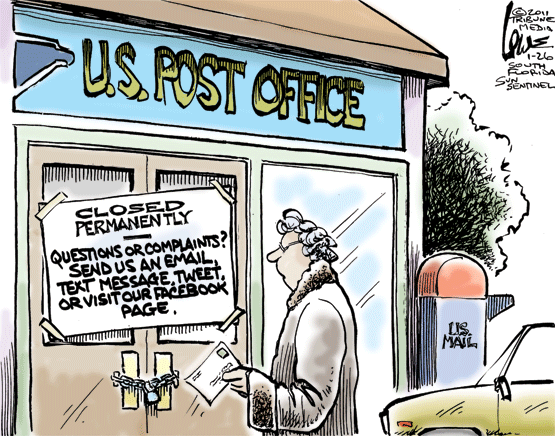 The good news is the exigency surcharge is now rolled back. But as one industry analyst points out, the struggle is far from over.
The good news is the exigency surcharge is now rolled back. But as one industry analyst points out, the struggle is far from over.
Now that the USPS has rolled back the 4.3% emergency surcharge on postage, mailers everywhere are breathing a little bit easier. But now is not the time to let down our collective guard, says one industry expert.
“The fight continues,” writes Greg Dool in Folio:.
Dool cites Linda Thomas Brooks of the Association of Magazine Media (MPA) who told members last week that the fight for affordable postage is not going away.
“While we are enthusiastically celebrating this milestone,” Brooks wrote, “we do proceed with caution as the fight for affordable postage is made up of many battles.”
Dool notes that the rollback is expected to save publishers upwards of $60 million in mailing costs over the next year, but says that the permanency of the exigency rate remains in question.
“Indeed, three days before the postal rate reduction was even implemented, the USPS revealed in a statement that it had petitioned the Postal Regulatory Commission to begin early the mandated ten-year review of the consumer price index rate cap, and the repeal of the exigency surcharge itself is currently the subject of litigation in the appellate courts,” he writes.
Dool’s article gives a solid rundown of how we’ve gotten to this point, beginning with the Postal Service’s 2000 proposal to raise rates on periodicals by a whopping 15%. That, says the MPA’s James Cregan, got the industry’s attention. Next came the Postal Accountability and Enhancement Act (PAEA) in 2006, which tied prices to the consumer price index and put the Postal Regulatory Commission in charge of verifying the USPS’s compliance.
That set the stage for the disruption of the Great Recession, and the ongoing battle between the Post Office and their largest customer, the mailing industry, all of which resulted in the 4.3% “emergency” hike, and now the recent rollback.
The battle continues, as Dool correctly notes, between mailers and providers.
“While publishers will surely celebrate the immediate 4.3 percent savings on postage, it’s important to remember that the cost reduction is by no means permanent,” he writes. “The statutory review of the consumer price index cap will commence later this year (perhaps earlier, if the Postal Service’s petition is well-received), and the battle over the exigency surcharge will continue to rage in appellate courts as the USPS argues the case for a $12 billion, surcharge-fueled revenue boost and the MPA vehemently disagrees.”
“Whether the solution involves further rate hikes, serious reorganization to drive efficiency and savings, or the USPS simply fading into obscurity remains unclear. What is clear, however, is that both organizations are willing to continue the fight to pursue their respective interests,” he continues.
